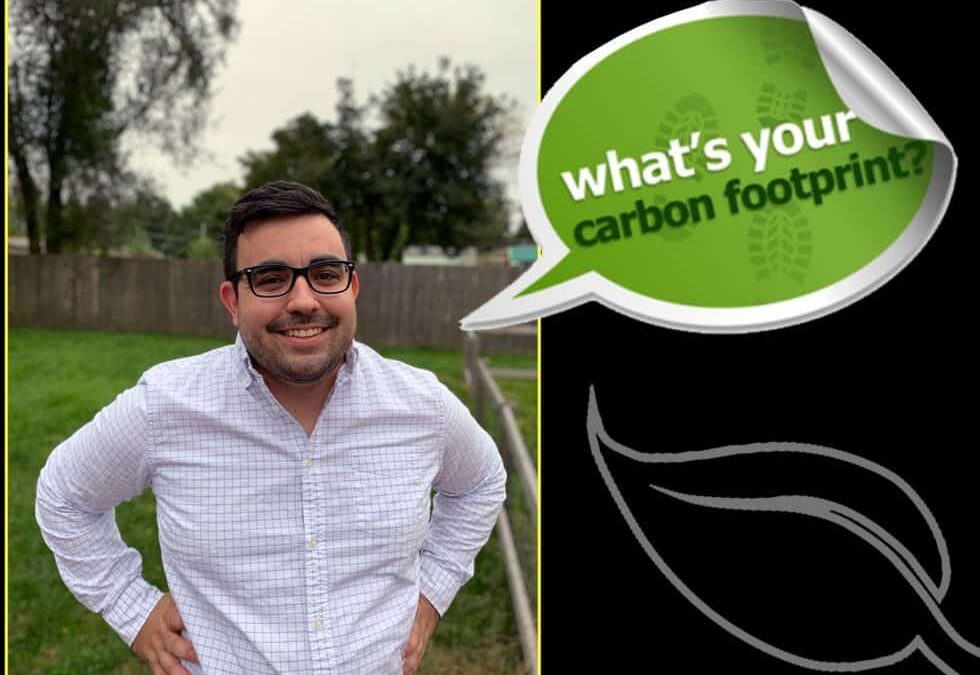If you are like me, you already know that climate is an urgent problem. You also know that we need to get carbon out of the atmosphere and we do that by deploying a bunch of carbon-reducing solutions. You may also have a good idea of what some of the solutions are: renewable energy, electric cars, flying less, energy-efficient buildings…..it’s a pretty long list. With this long list of solutions, I find myself overwhelmed with where to start and what to focus on. So I started looking at what others are doing.
In the Paris Climate Accord, the United States agreed to reduce our carbon emissions 26-28% by the year 2025 (baseline 2005). Soon after the 2016 election, the US left the agreement. Thankfully a bunch of cities, states and businesses have pledged to honor that commitment and other pledged to go even further:
- The City of Lawrence established various goals to achieve 100% clean, renewable energy by 2025-2035
- Climate Action KC put together a policy playbook to help cities, school boards, county commissions, etc. meet the goals from the Paris Agreement.
- Microsoft pledged to be carbon negative by 2030 and to remove all of their historical emissions by 2050
I’ve been thrilled to see these announcements and others like them! It’s great to see others step up to the plate, but what about my reductions? It wasn’t until a few months ago that I realized that the 26-28% reduction goals in the Paris Accord also applied to my household….and I had no idea what my carbon emissions were. Turns out, not many people do. I did a quick poll of the office, and no one was tracking their carbon footprint. In fact, since coming to this realization, I have only met one person who was able to tell me what their carbon footprint was. This struck me as odd because there seems to be a sense of urgency around climate change, yet we don’t really know that much about our own emissions.
I sell solar for a living, and I know that people go solar for two reasons: 1) they want to reduce costs and/or 2) they want to reduce their carbon footprint. If you’ve ever received a quote from a solar company, you know how much money you can save. But do you really have any idea of how much you are reducing your carbon footprint?
Because of my job, I talk to people about the climate every day. In my free time, I read books about climate, I listen to podcasts about climate, and if you find me at a bar, I am talking about climate in between sips of craft beer and bites of loaded nachos. Yet I find myself talking to people about going solar at their home or business without being able to tell them “this will reduce your carbon footprint by xx%”. So I set off on a quest to figure out how to track my emissions so that I can help you track yours.
This post is about what I found when on my journey. Future posts will be about the new quest that I am on: My wife and I are currently trying to bring our carbon footprint down 26-28% by 2025 and I am going to share what we are going through in order to help you do the same. But before you can do anything, you need to know how to calculate your carbon footprint. To do that, we need a calculator!
Not all calculators are created equal
There are a few carbon footprint calculators out there and an honorable mention goes to the EPA’s calculator. Yet the calculator that I ultimately went with was the one at www.carbonfootprint.com. Here’s why:
- Most calculators don’t have enough detail, they just focus on the big hitters: Electricity Usage, Natural Gas/Propane Usage, Vehicle Miles Driven, and Recycling. While this is a big part of your carbon footprint, it leaves out some very important components of your footprint, such as: Flights, Amazon Purchases, Dietary Preferences, and all of these little things that add up.
- It was quick and easy! When I recommend CarbonFootprint.com
to people, I typically say ” you can get a good understanding of your footprint in 5 minutes, but if you want to put 30 minutes into it you can get a great understanding of your footprint.” My recommended calculator takes into account things such as flights and how much meat is in my diet. But what I really like is that it asks me how much money I spend every year on clothes, vacations, pharmaceuticals, and a few other categories that make a lot of sense. They are then able to convert dollars into tons of carbon by using industry-specific averages. It’s not perfect, but it’s something that I can handle and it gives me a better picture than some other calculators out there. - They tell me how much it would cost to offset my carbon footprint. Be warned: The calculator is free, but they are trying to sell you carbon offset credits. I actually really like this feature because now I can put a dollar figure on my carbon emissions. This will be covered more in a future post, but my wife and I are investing in a deep energy efficiency home retrofit en lieu of the purchasing carbon offset credits. Understanding what our carbon emissions are worth helped justify the cost of the project. For us, 1 year of carbon credits wasn’t even that much. They gave us a menu of options that ranged between $250-500. I’d imagine that most families would be $500-$3,000 per year. Again, check back for a future post because we did not buy the credits. Instead, we invested that money into a project that we would not have otherwise done.
So I encourage you to visit www.carbonfootprint.com
Until next time,
Andy Rondon

